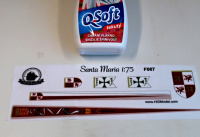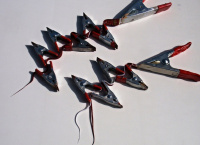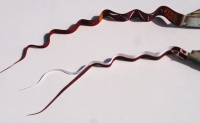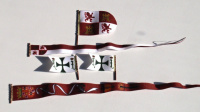Flags - usage and shaping
Flags are made by thermo-sublimation printing method on the synthetic cloth Whisper.
ATTANTION! – Flags must not be treated by acetone-based varnishes, paints or thinners and synthetics. Damage will occur – dissolution of color and destruction of the product.
Flags are printed in such way that their appearance and size ratio correspond to the historical facts, because there were regulations on the size of flags and banners given by all admiralties. Most of the time the size of the flags was in relate to the size of the ship, especially to its width.
Main flag in full size has a same long as width of ship. These the flags were use in official situation, battle and similar. Then was next main flag which have size 1/2 or 1/3 of Main flag. These flags were use in next common situation. Regulations determine when to use the flag of a given size.
Also, the size of the flags in the available sets is adapted to the size of the ship parts from the kit. This is especially true for the flagpoles at the top of the masts. There is an imitation of the “cloth strip” on the pole side of the flag, by which flags were attached to the pole or lifting rope.
Workflow for both-side printed flags:
Prior to use, iron the flags over a damp cloth or better through a low temperature food baking paper. Long-term exposure to high temperatures will damage the cloth itself and the flag print. All our flags are both-side printed.
To avoid fraying of the edges and to allow the flags to be shaped, I came up with a very simple method: Spray the flags with hairspray. Or spray or paint with acrylic lacquer. Or treat with diluted liquid laundry starch to soak the fabric.
After the flag has dried, we will cut it off. In case of banners and some flags, where printing of the lower side exceeds front side, we follow the front side.
After cutting out the flag, moisten it gently with water and shape it as it waves in the wind. To ensure the desired shape, secure the flag with objects to keep the desired shape until the fabric dries.
Procedure can be repeated until we are satisfied with result.
Then we fix the flags to the flag rope or pole.
I wish you nice results. Radek Beseda, HiSModel





